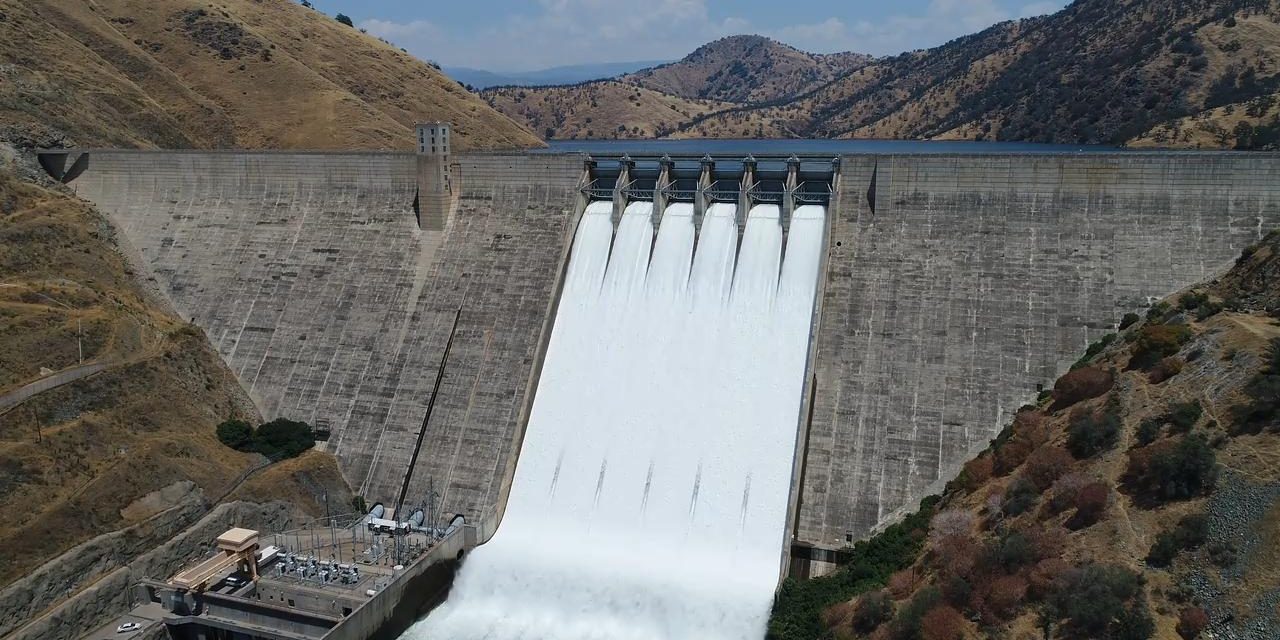Prepared By: RANDY McFARLAND, Public Information Consultant
As Pine Flat Reservoir’s water storage increases and the lake level rises, it eventually reaches a point where the dam’s gated spillway, located at the highest operational point, is used. That level is approximately 85% of gross pool. Water management officials expect to reach that level in the coming days.
That does not mean that Pine Flat Reservoir has reached its capacity of one million acre-feet of water. Nor does it signal that Pine Flat Reservoir storage is exceeding its gross pool.
“Pine Flat Dam was designed decades ago to have three built-in release mechanisms that send water into the Kings River to flow into the valley,” said Kings River Watermaster Steve Haugen. “The use of each depends upon how full the reservoir happens to be.”
- When the lake level is low, releases are made through low level gates positioned not far above the downstream river’s water surface.
- When the water level rises past the lake’s halfway storage (gross pool) elevation, releases flow through the mid-level gates. These discharge water onto a large flip bucket at the dam’s base, dissipating the energy and dispersing water into the channel to avoid erosion.
- When water reaches a point — approximately 85% of gross pool — about 27.5 feet below the reservoir’s usual highest water level, the U.S. Army Corps of Engineers (USACE) opens one or more of the spillway (Tainter) gates, just enough to release the desired flow into the river below. This puts on a spectacular waterfall-type show as water plunges down the spillway and is dispersed into the channel by the flip bucket.
“Such spillway use is merely another means of safely releasing water to the river,” Haugen said. “Pine Flat Dam has never exceeded gross pool. That would occur only if the amount of water being stored exceeds Pine Flat’s capacity of one million acre-feet. The spillway gates are built of thick steel and are strong enough to hold stored water but can be raised as much as necessary.”
Under more normal Pine Flat conditions, none of those three originally designed release mechanisms are used.
That’s because the first choice to move water from the lake into the river below is to direct it through one or more of the three penstocks leading to the Kings River Conservation District’s Jeff L. Taylor-Pine Flat Power Plant, located on the north side of the dam’s base.
“Lake water, under high pressure, is used whenever possible to generate hydroelectric power in one or more of the plant’s three units,” said KRCD General Manager David Merritt. “Penstocks to carry water for a power plant were built into the dam at the time of its construction in the early 1950s.”
The plant went into commercial operation in 1984 with a designed production capacity of 165 megawatts of carbon free electric power generation. It generates only when water is released to meet irrigation demands or flood release requirements, and if reservoir storage is high enough to permit generation to take place, Merritt said.
The power plant can use up to about 7,000 cubic feet per second of release flow into the river. Above that capacity, releases must be made through one of the dam’s original release mechanisms.
For More Information, Please Contact:
STEVE HAUGEN, Kings River Water Association Watermaster, (559) 217-5249
DAVID MERRITT, Kings River Conservation District General Manager, (559) 237-5567
RICK BROWN, U.S. Army Corps of Engineers-Sacramento District Public Affairs, (916) 557-5102
RANDY McFARLAND, KRWA Public Information Consultant, (559) 260-2775

